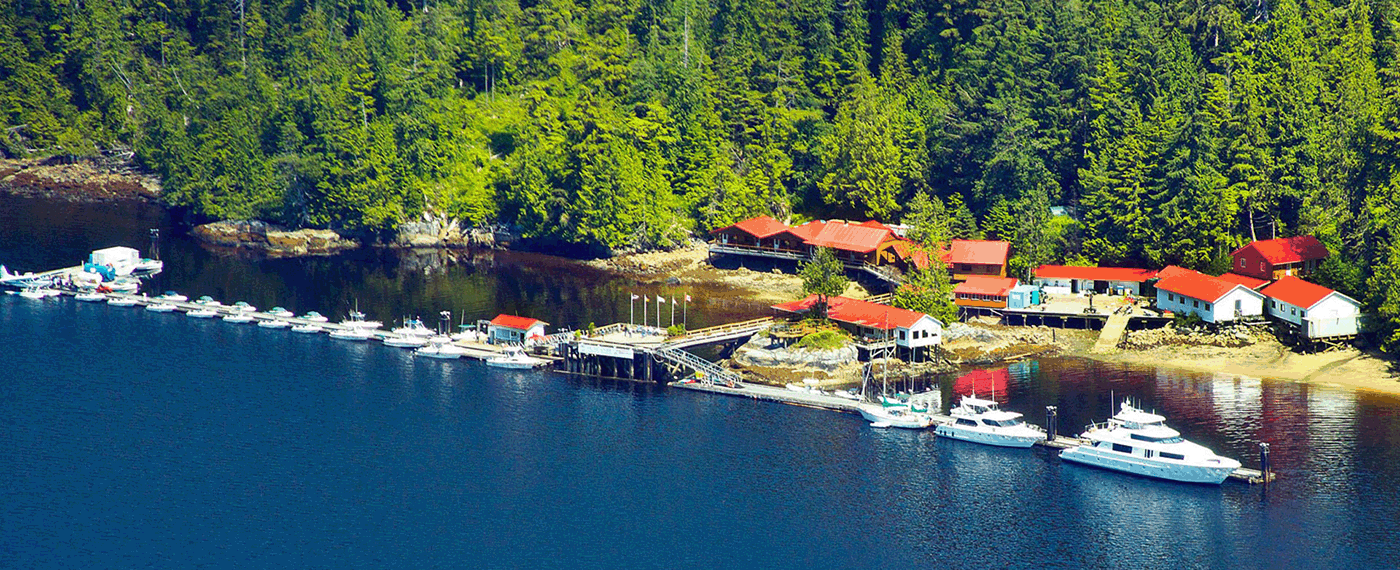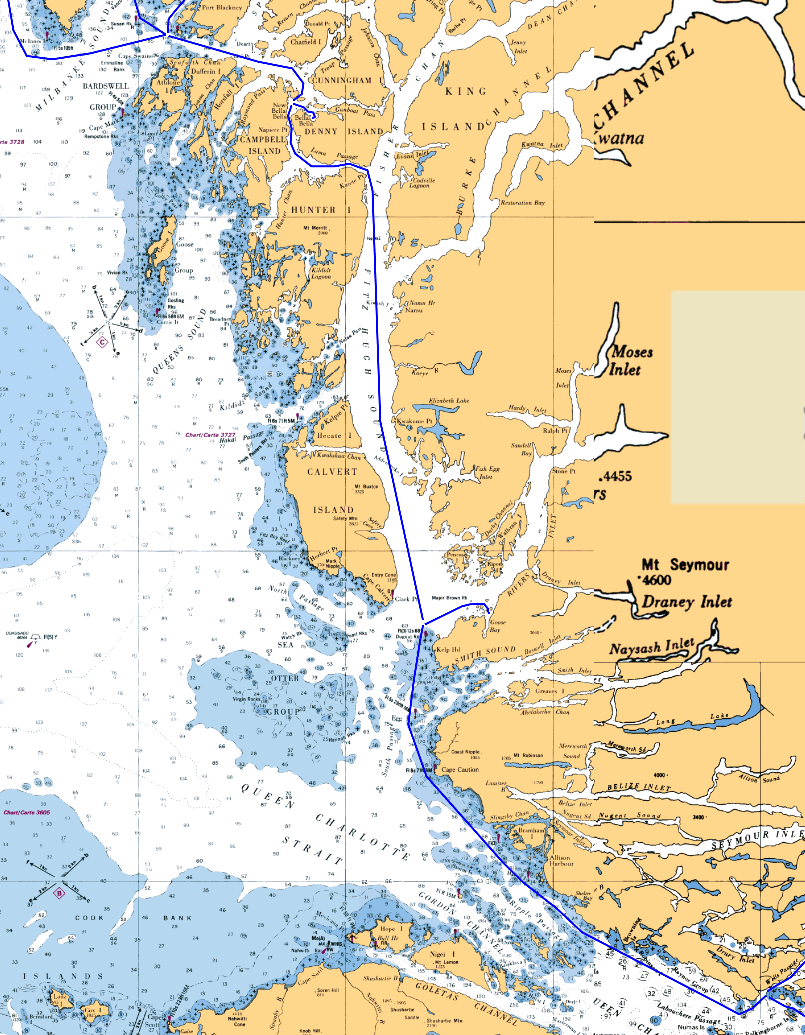Sullivan Bay to Ivory Island
Sullivan Bay to Ivory Island
An hour after leaving Sullivan Bay, you are in the Queen Charlotte Strait and will be in that water and the Queen Charlotte Sound for the next 54 miles. The Queen Charlotte Strait/Sound is one of only two places on the voyage to Southeast Alaska that is exposed to the Pacific Ocean. Attention to the tidal flow and the wind is necessary for a comfortable safe crossing. The charming little outpost of Duncanby Landing awaits at the completion of the crossing.


Duncanby Lodge
From Duncanby Landing, it is 58 miles to the settlement of Shearwater. And from there, another 18 miles to Ivory Point which is a key route decision point.
Area Overview
From Wells Passage to Dug Out Rocks you are crossing the Queen Charlotte Strait/Sound. If the wind is low and the tide is flooding, don't stop. It's 54 miles across, or about six hours.
That said, one of the most dramatic sights on the B.C, coast is Nakwakto Rapids at maximum ebb. Billions of gallons of water flow through the choke point that is Nakwakto Rapids with each change of the tide. On a bull ebb, the current can reach 18 knots. Cross the Rapids at slack and a vast area of little-visited waterways opens up to you. We have anchored at the head of Frederick Sound, a remote extension of Seymour Inlet, and were utterly alone in the wilderness. We also made a monster haul of Dungeness crabs.
It is 53 miles from Major Brown Rock (just outside of Duncanby Landing), up Fitzhugh Sound, through Lama Passage to New Bella Bella; and then three more miles to Shearwater.
While there are some interesting anchorages off Fitzhugh Sound (e.g., Fish Egg Inlet), turning west at Hecate Island and entering Queens Sound gives you access to a number of intimate little anchorages there and in the Bardswell Group. Anchoring in these areas would be an alternative to tying up at Shearwater.
The topography along the route shown on the chart below, and in Queens Sound, is similar to that passed coming up the coast from the Broughton Islands: thickly forested low hills and mostly rocky shorelines.
The further inland you explore, up Rivers Inlet, Burke Channel and Fisher and Dean Channels, the more elevation you will find. The Dean River, a legendary steelhead stream, culminates at the head of Dean Channel.
One could spend an entire summer just exploring the deep, penetrating fjords that cut inland between Burke Channel and Finlayson Channel.
